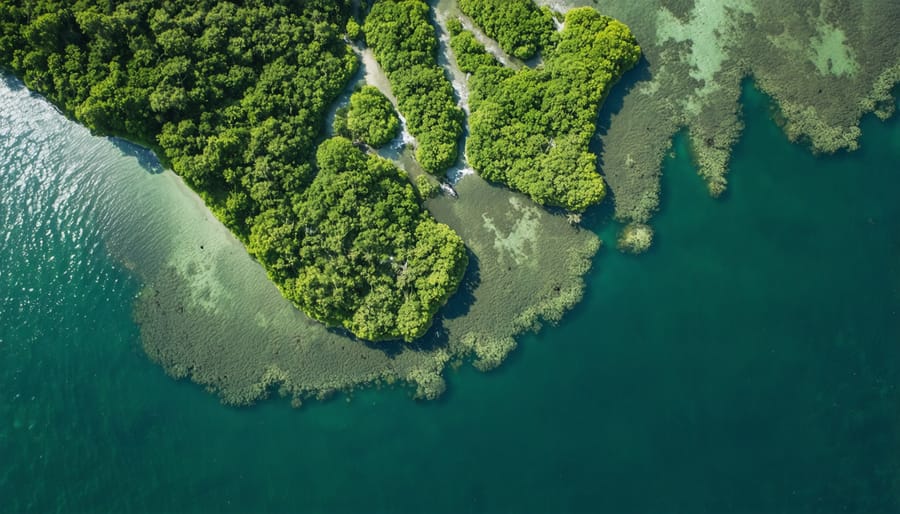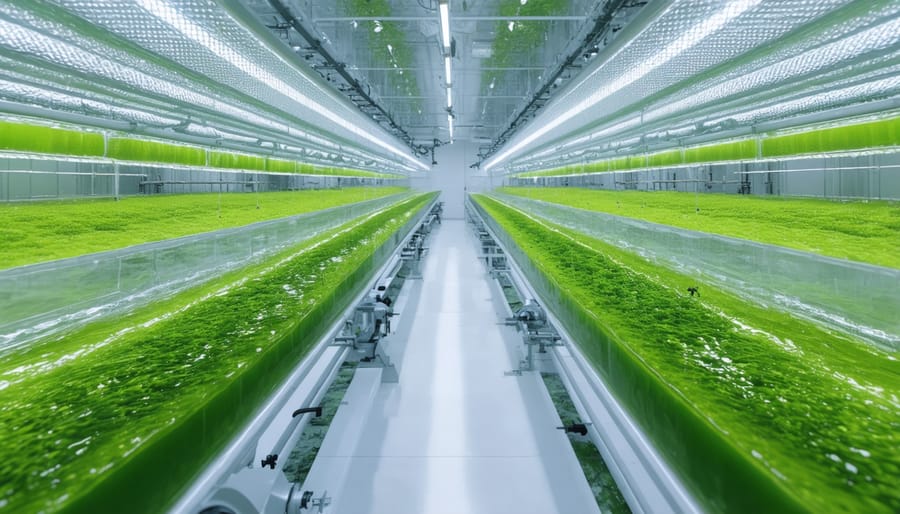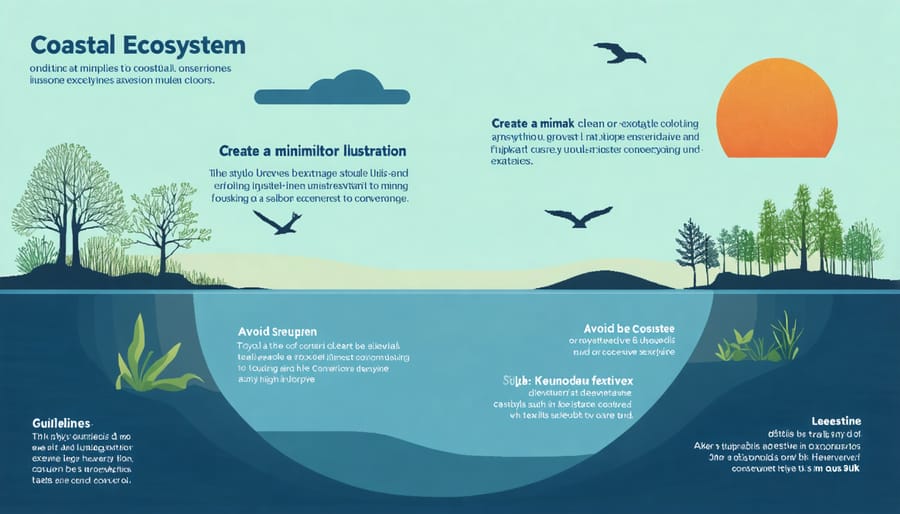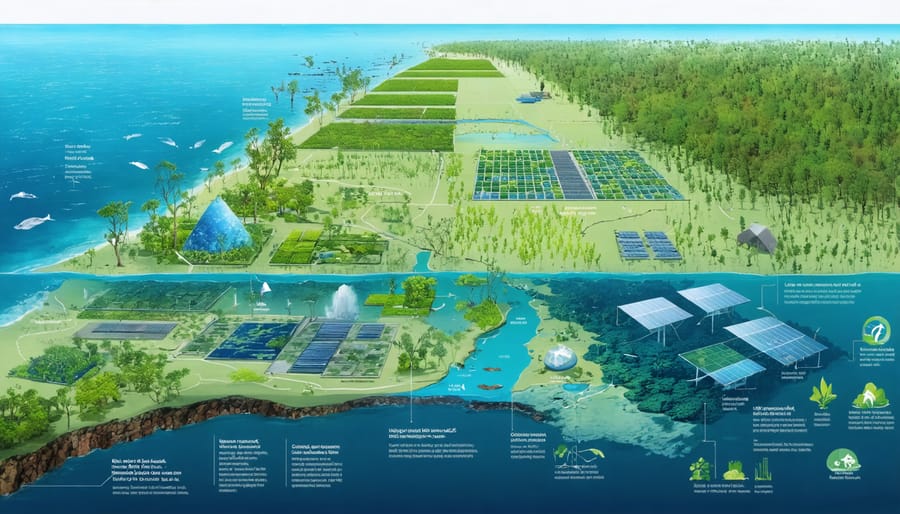Australia’s diverse ecosystems stand as living laboratories of resilience and adaptation, spanning from ancient rainforests to vast coral reefs. These interconnected natural systems not only sustain our unique wildlife but also hold tremendous potential for sustainable bioenergy production and ecological innovation.
From the tropical savannas of the north to the temperate woodlands of the south, our continent hosts some of Earth’s most distinctive biomes. These ecosystems serve as vital carbon sinks, water purifiers, and biodiversity hotspots, while simultaneously offering solutions to our emerging energy challenges. The Great Barrier Reef, Daintree Rainforest, and Murray-Darling Basin represent just a fraction of Australia’s environmental wealth, each playing a crucial role in maintaining ecological balance and supporting sustainable development.
As climate change reshapes our natural world, these ecosystems demonstrate remarkable adaptability, teaching us valuable lessons about resilience and regeneration. Their preservation and sustainable management not only ensures the survival of countless species but also opens new pathways for renewable energy solutions that work in harmony with nature.
Australia’s Coastal Ecosystem Diversity
Mangrove Forests
Australia’s mangrove forests are remarkable coastal ecosystems that serve as nature’s engineers, creating a vital bridge between land and sea. These salt-tolerant forests stretch across 11,500 kilometers of Australia’s coastline, primarily along the northern and eastern shores, where they act as natural carbon sinks and energy powerhouses.
These coastal warriors pack an impressive punch when it comes to biomass potential. A single hectare of mangrove forest can store up to four times more carbon than a typical rainforest, making them exceptional candidates for bioenergy production. The fallen leaves, branches, and organic matter that accumulate in these ecosystems create a rich source of biomaterial that could be sustainably harvested for energy generation.
What makes Australian mangroves particularly special is their ability to adapt to harsh conditions while maintaining high productivity. In places like the Gulf of Carpentaria and the Daintree region, these forests have evolved to thrive in challenging environments, producing significant amounts of biomass year-round.
Recent pilot projects have demonstrated how mangrove waste material can be converted into biofuel, offering a sustainable energy alternative while preserving these crucial ecosystems. The key lies in selective collection of naturally shed material, ensuring the forest’s integrity remains intact while harnessing its energy potential.
Beyond their bioenergy potential, these forests provide essential services such as coastal protection, fish nurseries, and water filtration, making them true champions of Australia’s coastal environments.

Seagrass Meadows
Stretching along Australia’s vast coastline, seagrass meadows are among the most remarkable yet understated ecosystems in our marine environment. These underwater gardens act as natural carbon sinks, storing carbon dioxide up to 40 times faster than tropical rainforests, making them crucial players in our fight against climate change.
Australian seagrass meadows, particularly prevalent in areas like Shark Bay in Western Australia and the Great Barrier Reef coast, cover approximately 4,000 square kilometers of our coastal waters. These vibrant underwater forests serve as nurseries for fish species, protect our shorelines from erosion, and maintain water quality by filtering nutrients and sediments.
What makes these ecosystems truly extraordinary is their energy storage capability. The dense network of seagrass roots and rhizomes trap and store organic carbon in the seafloor sediments, creating what scientists call “blue carbon” reserves. These reserves can remain locked away for thousands of years when left undisturbed.
Recent studies have shown that Australian seagrass meadows store approximately 155 million tonnes of carbon dioxide equivalent. This natural carbon capture system not only helps mitigate climate change but also supports local fishing industries and maintains marine biodiversity. Conservation efforts are now focusing on protecting and restoring these valuable ecosystems, recognizing their dual role in environmental preservation and natural carbon sequestration.
Bioenergy Potential in Coastal Zones
Algae-Based Biofuels
Along Australia’s sun-drenched coastlines, a green revolution is taking shape in the form of algae-based biofuels. This innovative approach to renewable energy harnesses the natural power of microscopic algae, which efficiently convert sunlight and CO2 into energy-rich compounds. Several coastal facilities, particularly in Queensland and Western Australia, have emerged as pioneers in large-scale algal cultivation.
The process begins in sprawling outdoor ponds or sophisticated photobioreactors, where carefully selected algae species thrive in Australia’s abundant sunshine. These tiny powerhouses multiply rapidly, producing oils that can be refined into sustainable biodiesel and other biofuels. What makes this technology particularly appealing is its minimal environmental impact – algae cultivation requires no arable land and can even utilize seawater, preserving precious freshwater resources.
Australian research institutions have made significant breakthroughs in improving algal strain efficiency and developing cost-effective harvesting methods. The Darwin-based Advanced Biofuels Pilot Plant has demonstrated how algae can produce up to 30 times more energy per hectare than traditional biofuel crops. Moreover, the process creates valuable by-products like nutrient-rich fertilizers and protein-based animal feed, making it economically viable for coastal communities.
Recent developments in extraction technology have dramatically reduced processing costs, bringing algae-based biofuels closer to price parity with conventional fuels. Several coastal communities are already benefiting from small-scale algae cultivation projects, which provide both sustainable fuel alternatives and local employment opportunities.
Looking ahead, Australia’s algae-based biofuel industry shows tremendous promise for scaling up. With its vast coastline, ideal climate conditions, and growing expertise in biotechnology, the country is well-positioned to become a global leader in this sustainable energy sector. As commercial viability improves and production techniques advance, these microscopic organisms could play a crucial role in Australia’s transition to a cleaner energy future.

Coastal Biomass Resources
Australia’s coastal regions harbor a wealth of untapped biomass resources that could revolutionize our renewable energy landscape. Beyond the well-known mangrove ecosystems, our coastlines feature diverse vegetation types with remarkable potential for bioenergy production.
Seaweeds and marine algae stand out as promising coastal biomass sources, with species like bull kelp and sea lettuce showing exceptional growth rates and energy conversion potential. These marine plants don’t compete with food crops for land and naturally absorb carbon dioxide, offering a dual benefit for our environment.
Coastal saltmarshes, often overlooked in energy discussions, contain hardy plants adapted to saline conditions. Species like samphire and salt couch grass can be harvested sustainably for biomass production while maintaining their crucial role in coastal protection and marine habitat preservation.
The coastal sand dunes support unique vegetation communities, including coastal wattle and spinifex, which could contribute to local bioenergy projects. These plants are already adapted to harsh conditions and require minimal maintenance, making them ideal candidates for sustainable harvesting.
Several coastal communities are leading the way in utilizing these resources. In Western Australia, a pilot project is converting beach-cast seaweed into biofuel, while Victorian coastal farms are experimenting with integrated systems that combine traditional agriculture with coastal vegetation harvesting.
The key to success lies in careful management and selective harvesting to maintain ecosystem balance. By implementing rotating harvest zones and monitoring vegetation recovery, we can ensure these coastal biomass sources remain viable for generations to come.
Looking ahead, these coastal vegetation resources could power local communities, reduce reliance on fossil fuels, and create new green jobs in coastal regions. The future of sustainable energy might just be growing along our shorelines, waiting to be harnessed responsibly.
Sustainable Management Practices

Conservation Strategies
Australia’s coastal ecosystems require careful management to balance biomass harvesting with protecting marine ecosystems. Several successful strategies have emerged from collaboration between scientists, indigenous communities, and industry stakeholders.
Rotational harvesting has proven particularly effective, allowing sections of coastal areas to recover while others are being utilized. This method, inspired by traditional Aboriginal land management practices, ensures sustainable biomass production while maintaining ecosystem health. Many coastal communities now implement three to five-year rotation cycles, which have shown promising results in seaweed and algae regeneration.
Buffer zones play a crucial role in conservation efforts. These designated areas act as natural barriers between harvesting zones and sensitive habitats, helping to preserve biodiversity while supporting sustainable resource extraction. The establishment of these zones has led to increased fish populations and improved water quality in many regions.
Monitoring programs using cutting-edge technology help track ecosystem health and adjust harvesting practices accordingly. Underwater drones and satellite imaging provide real-time data on seagrass beds and marine life movements, enabling adaptive management strategies. These programs have been particularly successful in the Great Barrier Reef region, where careful biomass harvesting coexists with coral conservation efforts.
Community-based conservation initiatives have emerged as powerful tools for ecosystem protection. Local groups, often led by Traditional Owners, participate in regular ecosystem health assessments and contribute to decision-making processes. This approach has resulted in better compliance with harvesting guidelines and increased awareness of sustainable practices.
Investment in restoration projects alongside harvesting activities ensures long-term ecosystem resilience. Successful examples include mangrove replanting programs in Queensland and seagrass rehabilitation projects in Western Australia, where biomass producers actively contribute to ecosystem regeneration efforts.
Future-Proofing Our Coastlines
Australia’s coastal ecosystems face unprecedented challenges from climate change, but innovative approaches are transforming these challenges into opportunities for resilience. By balancing energy needs with conservation, coastal communities are pioneering sustainable solutions that protect both our shorelines and our future.
Living shorelines have emerged as a game-changing strategy, incorporating natural elements like mangroves and seagrass meadows to buffer against rising seas while sequestering carbon. These blue carbon ecosystems not only protect coastal infrastructure but also provide essential habitat for marine life and contribute to Australia’s carbon reduction goals.
The Great Barrier Reef Marine Park Authority has implemented a comprehensive resilience strategy that serves as a model for coastal protection worldwide. This includes establishing climate-resilient coral nurseries, enhancing water quality monitoring, and developing rapid response protocols for extreme weather events. These measures ensure our iconic reef systems can adapt to changing conditions while maintaining their ecological functions.
Local councils along the Australian coastline are embracing nature-based solutions, such as dune restoration projects and wetland rehabilitation. These initiatives create natural barriers against storm surge while supporting biodiversity and providing recreational spaces for communities. The success of these programs demonstrates how working with nature, rather than against it, can yield multiple benefits for both ecosystems and human settlements.
Technology plays a crucial role in future-proofing efforts, with advanced monitoring systems now tracking coastal changes in real-time. This data-driven approach allows for proactive management and helps identify areas requiring immediate intervention. Combined with traditional ecological knowledge from Indigenous communities, these modern tools are creating more robust and adaptive coastal management strategies.
By investing in these forward-thinking approaches, Australia is setting an example for how coastal nations can protect their shorelines while fostering sustainable development and ecosystem resilience.
Australia’s coastal ecosystems hold immense potential for sustainable bioenergy development, offering a unique opportunity to address both our energy needs and environmental challenges. The success stories we’ve explored demonstrate that with careful planning and innovative approaches, we can harness these natural resources while preserving their ecological integrity for future generations.
The path forward is clear: by investing in coastal bioenergy projects, Australia can reduce its carbon footprint while creating new economic opportunities in regional communities. The sustainable harvesting of marine biomass, coupled with advanced processing technologies, presents a viable solution that aligns with our national commitment to renewable energy targets.
What makes this approach particularly promising is its ability to deliver multiple benefits. Beyond clean energy production, these initiatives support biodiversity conservation, create sustainable jobs, and help protect our iconic coastlines from the impacts of climate change. The integration of traditional knowledge with modern scientific practices has shown us that sustainable development and environmental protection can go hand in hand.
As we look to the future, the role of coastal bioenergy in Australia’s energy mix cannot be understated. With continued research, community engagement, and government support, we can build a resilient and sustainable energy sector that works in harmony with our natural environment. The time to act is now, and the potential rewards – both environmental and economic – make this an opportunity we simply cannot afford to miss.

